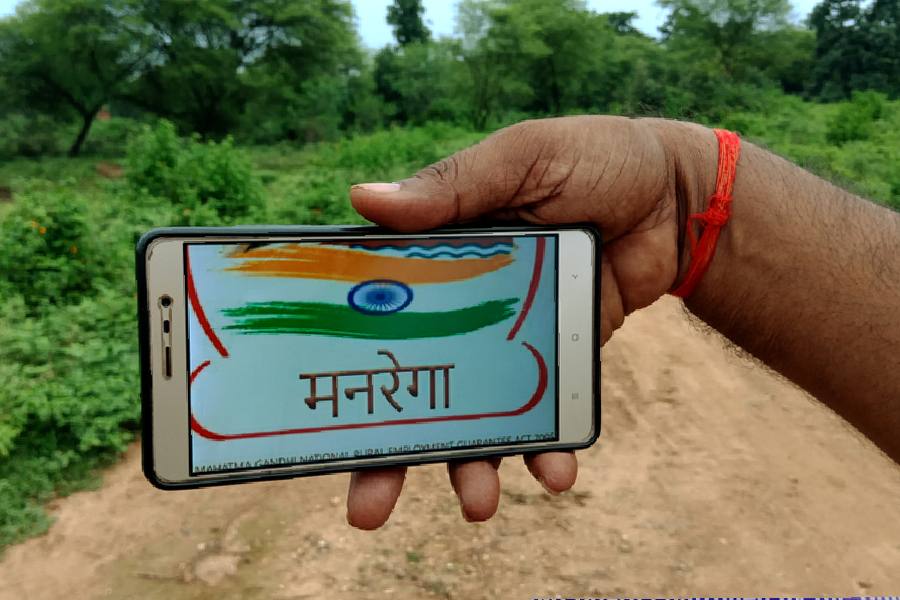 |
| The Chinnamasta Kali of Bakhrabad in Cuttack. Picture by Badrika Nath Das |
Cuttack, Oct. 31: When it comes to Kali Puja in Cuttack, among the 67 Puja mandaps, Bakhrabad has its distinction for worshipping the headless form of the goddess.
The goddess here holds her severed head in one hand while three jets of blood spurt out of her bleeding neck. One streams into her mouth and the other two flows in the mouths of her two female consorts. Her left leg is not over Shiva but over a couple embracing each other on a lotus.
“The goddess is not worshipped as Kali at Bakhrabad but as Chinnamasta— the one who chopped her own head on Chaturdashi— the day preceding Kali Puja,” says Rama Ballav Dwivedi, secretary of Bakhrabad Puja committee.
What jolts the viewer is the stark contrast in the iconographic setting— the gruesome decapitation, the copulating couple and the idol drinking of fresh blood— all arranged in a synchronised manner.
“It is apparently a composite form conveying reality which is an amalgamation of sex, death, creation, destruction and regeneration. But the most common interpretation of Chinnamasta is that she signifies self-control, courage and discernment,” says an elderly person of the locality.
“We have been worshipping the goddess in this form for four decades now. Nothing has been changed over the years,” Dwivedi says. Chinnamasta or the goddess with a severed head according to tradition is sixth of the 10 Mahavidyas or Great Wisdom Goddesses, he adds. In tantric tradition the spectrum of the 10 Mahavidyas or Great Wisdom Goddesses includes Kali, Tara, Tripura, Sundari, Bhuvaneshvari, Chinnamasta, Bhairavi, Dhumavati, Bagalamukhi, Matangi, Kamalatmika.
Old timers of the area say late Harihar Singh, late Bharat Singh, late Mukunda Behera and late Rama Dalei introduced the form of worship in the 1950s. It was discontinued in several years and was revived by the Bakhrabad Yuvak Sangh in early 1970.But nobody knows for sure how and under what circumstances Chinnamasta form of worshipping the Goddess began in Bakhrabad.
“We don’t know the exact reason. We fear any deviation may bring bad luck for us. So we have not made any change in the tradition,” says Chandan Kumar Behera, a member of the Yuvak Sangh.
In mythology story goes that once an incensed Shiva threatened to walk out on Parvati. No amount of coaxing by Parvati could turn around matters. Left with no choice, Parvati multiplied herself into 10 different forms for each of the 10 directions. Thus Shiva found her standing and guarding all the routes. Each of the manifested forms — 10 Wisdom Goddesses — represented essential truths.










